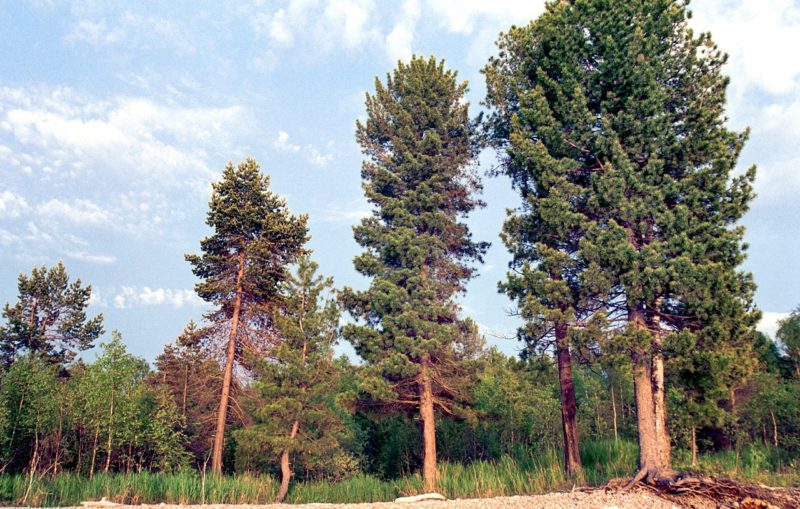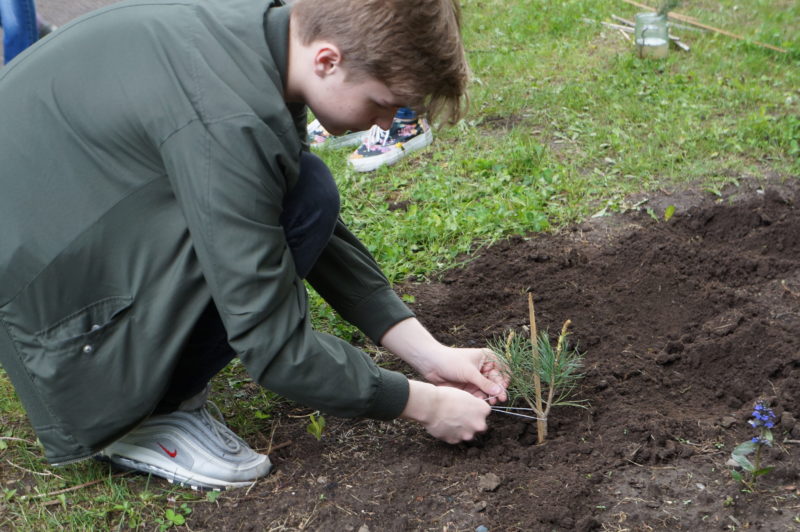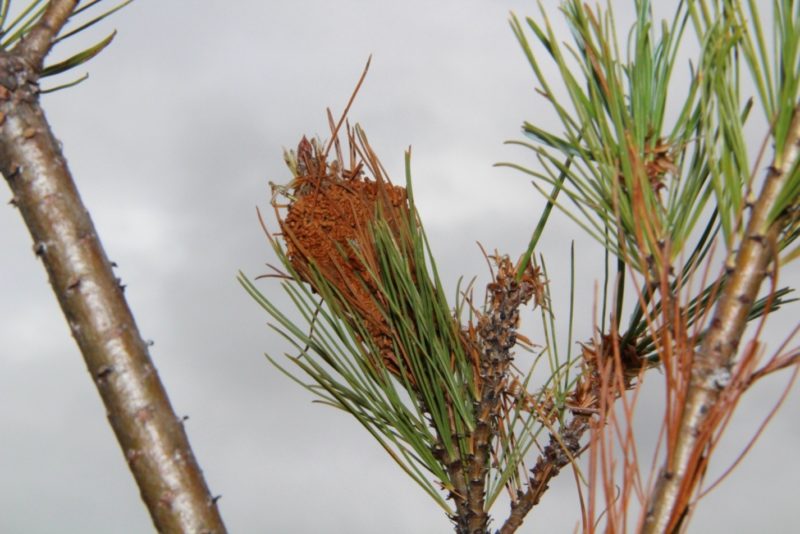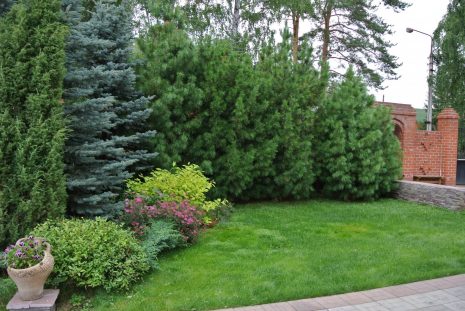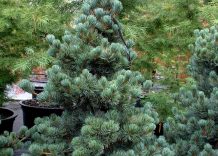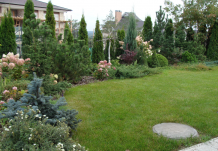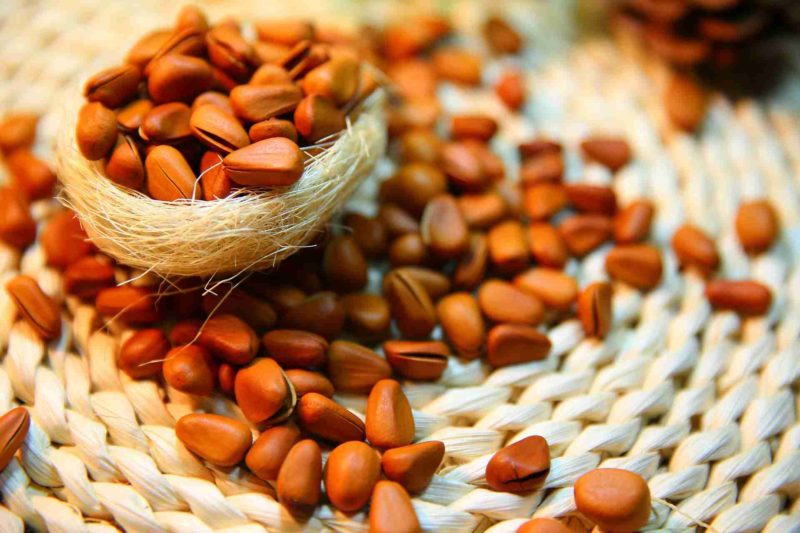For those gardeners who dream of harvesting from trees, almost not caring for them, Siberian cedar would be an ideal option. This plant not only bears fruit and looks very decorative, but also lives much longer than apple trees and pears. About the features of growing this conifer is worth knowing in more detail.
Material Content:
Description and description of Siberian cedar
In the Far East, cedar pine is widespread. The average lifespan of a tree is 500 years or more (at a height of up to 44 m). In Europe, it does not grow in the wild, but when planted, it perfectly survives.
To find out which conifer is in front of you, you need to look at its needles.
In ordinary pine needles grow in bunches of two pieces, and in cedar - 5 pieces. Thanks to this, Siberian cedar pine is more fluffy and lush. It does not require much care - trimming and shaping. The tree will purify the air in the area, filling it with a delicate, coniferous aroma.
Outdoor landing
You can determine the quality of the seedling, take a look at the bud in the center of the shoot. If it is bright, it means that everything is fine with the tree, it grows. Cedar is transplanted in early spring. If you leave this procedure for the May holidays, the tree will hardly transfer the transplant. The root ball of coniferous seedlings should be in a sufficiently large container, without damage.
The day before the transplant, the plant needs to be watered so that the root ball does not collapse when the seedling is removed from the container. This is an important condition for good survival.
The size of the landing pit makes 1/3 larger than the volume of the earthen coma of the tree. If the soil is loamy, it is perfect for seedlings.If there is sandstone on the site, it must be mixed with peat and clay in a ratio of 2: 1: 2.
Cedar loves light, sandy soil. The main thing is to ensure the integrity of the earthen coma when removing the seedling from the container. No mineral fertilizers need to be added to the hole; natural chernozem is enough. Planting of Siberian cedar ends with abundant watering, so that the soil acquires a uniform structure. Then mulch the trunk circle with sawdust.
Care Tips
Cedar seedlings need regular watering for better survival. This is done immediately when the topsoil under the mulch dries.
After 10 years of cultivation, cedar pines do not require human intervention. Only once every 3 years is it necessary to apply mineral fertilizers to nourish the trees, arrange sprinkling of the crown in a dry summer, and monitor pests and start the development of diseases.
It is important to carry out forming pruning from the first days of tree planting. The crown is made multi-peaked, lowered or spreading. Harvest of cones usually ripens at the very top of the cedar, so it can be very difficult to get it from a 20-meter height. Although it is rarely possible to meet natural forms of conifers in the garden, if only the owner brought seedlings from the forest.
In garden centers, you can buy undersized and early varieties of conifers:
- "The president";
- "Oligarch";
- "Narcissus";
- "Record holder" and others.
Pest and Disease Control
Many people want to grow cedar not only for a decorative purpose. Pine nuts are a welcome reward of a patient gardener. But you can’t wait for the harvest if you miss the development of the disease or the attack of pests in time.
Possible problems and solutions:
- Aphid pine. Insects populate the needles, laying eggs in the fall on the underside of the needles. In spring, young insects hatch from them. Effective spring treatment with insecticides. Systemic drugs water the tree under the root. and sprayed with contact on the needles.
- The shield is pine. Causes decay of needles and death of plants. To control the use of multiple spraying with insecticides, it is difficult to eradicate the insect.
- Scoop pine. Caterpillars that eat needles and tree buds in May. For the fight using the biological product "Lepidocide". The crown is sprayed in the spring before the buds open.
- Hermes pine - an insect similar to aphids. It is not dangerous for adult trees, but young ones can die. Repeated treatment with insecticides (3-4 times per season with a break of 3 weeks) will be required.
Especially dangerous for pine is cedar stalk or tar cancer. With this disease, numerous swellings are formed on the cortex with gray-yellow growths filled with spores of the rust fungus. Mycelium of the fungus causes the death of bark and wood; resin flows abundantly from damage on the trunk. The tree weakens, is inhabited by pests and slowly dies. Treatment with fungicides is ineffective, diseased plants are destroyed.
Combination with other plants
Near the Siberian cedar, it is not recommended to plant currants and gooseberries, which are intermediate hosts of rusty fungus. And the neighborhood of lupins will be very useful: this plant will serve as fertilizer for conifers.
In park landscape design, Siberian cedar pine is planted in combination with deciduous trees - birch, linden, maple, aspen.
The light crown of birches does not interfere with the growth of cedars, on the contrary, it protects young seedlings from wind and early frosts, and prevents the development of such coniferous diseases as the root sponge.
In the garden, cedars look good next to alpine slides and rose gardens. It is customary to plant flowers on the north side of trees to protect against wind and bright sun.
Useful properties of Siberian cedar
Pine nuts are of great value. In a shaded place of the taiga, cedars begin to bear fruit from the age of 40. In the garden, cones by the tree can appear at 18 years of age, provided that several more cedar pines grow nearby.
There are a lot of vitamins, minerals, proteins, healthy fats in pine nuts.Their use in food has a healing effect on the body, improves blood composition, strengthens the immune system.
The resin of the tree, called resin, is used to treat skin diseases - burns, wounds, cuts. It stops purulent processes, protects wounds from infection.
In folk medicine, pine needles are used to treat scurvy and other diseases. And wood is used to make furniture, musical instruments, and thousands more other useful items.


